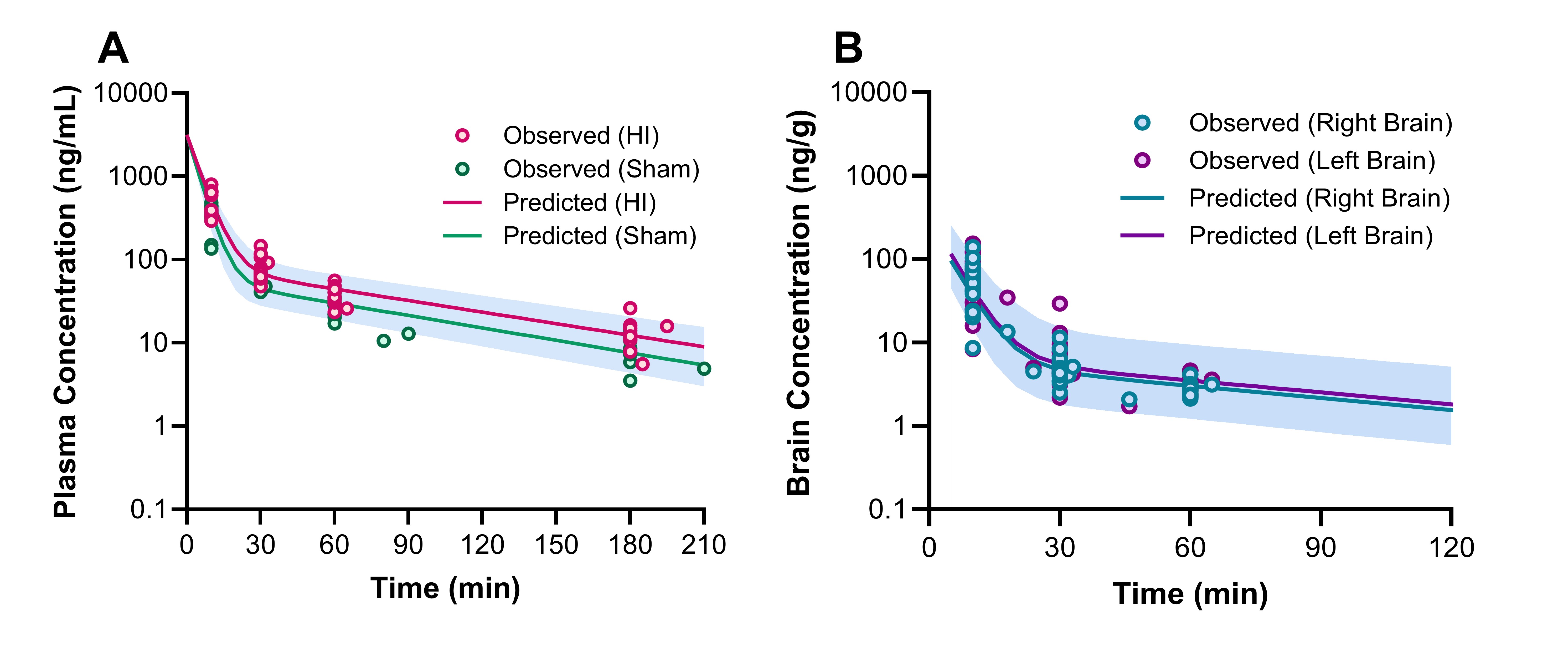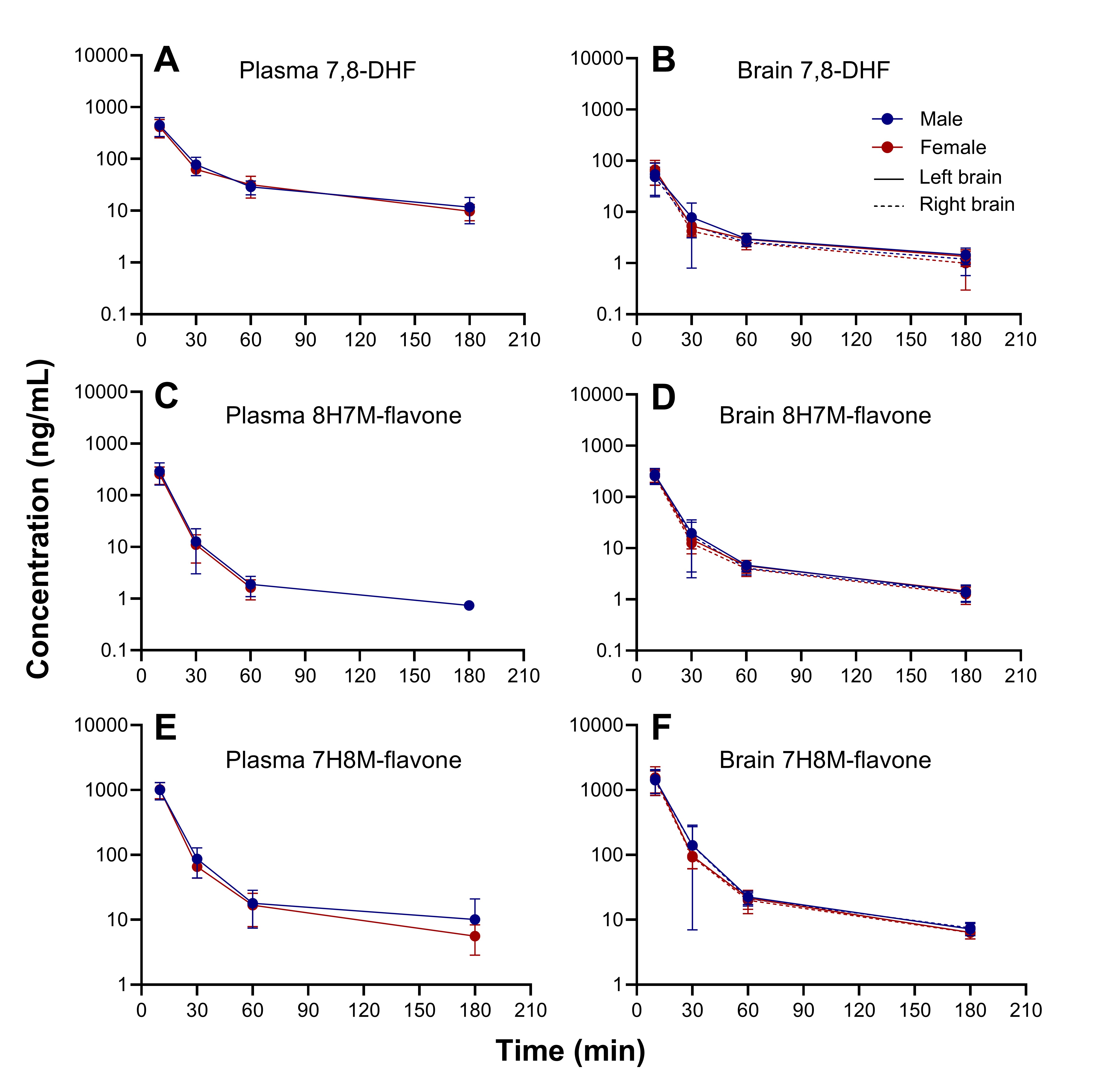Neonatal Neurology 7: Pre-Clinical 1
Session: Neonatal Neurology 7: Pre-Clinical 1
008 - Pharmacokinetics of 7,8-Dihydroxyflavone in Neonatal Mice with Hypoxia-Ischemia Related Brain Injury
Monday, April 28, 2025
7:00am - 9:15am HST
Publication Number: 8.6388
Sin Yin Lim, University of Wisconsin School of Pharmacy, Madison, WI, United States; Cameron O.. Scarlett, UW School of Pharmacy, Madison, WI, United States; Sefer Yapici, University of Wisconsin-Madison, Madison, WI, United States; Pelin Cengiz, University of Wisconsin School of Medicine and Public Health, Madison, WI, United States

Sin Yin Lim, PharmD (he/him/his)
Assistant Professor
University of Wisconsin School of Pharmacy
Madison, Wisconsin, United States
Presenting Author(s)
Background: 7,8-Dihydroxyflavone (7,8-DHF) is a promising translational therapy in several brain injury models, including the neonatal hypoxia-ischemia (HI) model in mice. However, the neuroprotective effect of 7,8-DHF was only observed in female, but not male, neonatal mice with HI brain injury. It is unknown whether HI-induced physiological changes affect brain distribution of 7,8-DHF differently for male versus female mice.
Objective: We aimed to evaluate the impact of sex on the pharmacokinetics of 7,8-DHF in plasma and brain neonatal mice following experimentally induced HI brain injury.
Design/Methods: Left-sided HI brain injury was induced in postnatal day 9 (P9) mice, followed by a 5 mg/kg intraperitoneal injection of 7,8-DHF. A liquid chromatography-tandem mass spectrometry method was developed to quantitate plasma, as well as left and right brain hemisphere samples. A nonlinear mixed-effects model was used to analyze the plasma and brain concentration-time data. A semi-quantitative approach was used to evaluate the concentrations of two active O-methylated metabolites of 7,8-DHF (8H7M-flavone and 7H8M-flavone) in both plasma and brain samples.
Results: Our PK analyses show that plasma 7,8-DHF concentrations followed a two-compartment PK model, with more than 95% eliminated by 3 hours after the IP injection. Sex was not significantly associated with the PK of 7,8-DHF; however, HI brain injury was associated with a 21% reduction in clearance (p < 0.01). The distribution of 7,8-DHF to the brain was rapid; however, the extent of brain distribution was low with the right and left brain-to-plasma partition coefficients being 8.6% and 9.9%, respectively. Additionally, both O-methylated metabolites of 7,8-DHF were detected in the plasma and brain.
Conclusion(s): The plasma and brain PK of 7,8-DHF in neonatal mice were similar between males and females. The low extent of 7,8-DHF brain distribution and the potential effects of the active metabolites should be considered in future studies evaluating the therapeutic effects of 7,8-DHF.
Pharmacokinetic model scheme.
.jpg)
Plasma and brain pharmacokinetic profiles of 7,8-DHF.
 Plasma (A) and brain (B) pharmacokinetic profiles of 7,8-DHF. In graph A, the circles represent the observed concentrations for neonatal mice with hypoxia-ischemia (HI) related brain injury (red) and without brain injury (sham; green). The solid lines represent the predicted concentration-time profiles for HI (red) and sham mice (green). In graph B, the circles represent the observed right (teal) and left (purple) brain concentrations. The solid lines represent the predicted concentration-time profiles for right (teal) and left (purple) brain hemispheres.
Plasma (A) and brain (B) pharmacokinetic profiles of 7,8-DHF. In graph A, the circles represent the observed concentrations for neonatal mice with hypoxia-ischemia (HI) related brain injury (red) and without brain injury (sham; green). The solid lines represent the predicted concentration-time profiles for HI (red) and sham mice (green). In graph B, the circles represent the observed right (teal) and left (purple) brain concentrations. The solid lines represent the predicted concentration-time profiles for right (teal) and left (purple) brain hemispheres.Sex-stratified concentration-time profiles of 7,8-DHF (A, B), 8H7M-flavone (C, D), and 7H8M-flavone (E, F) in plasma and brain.


